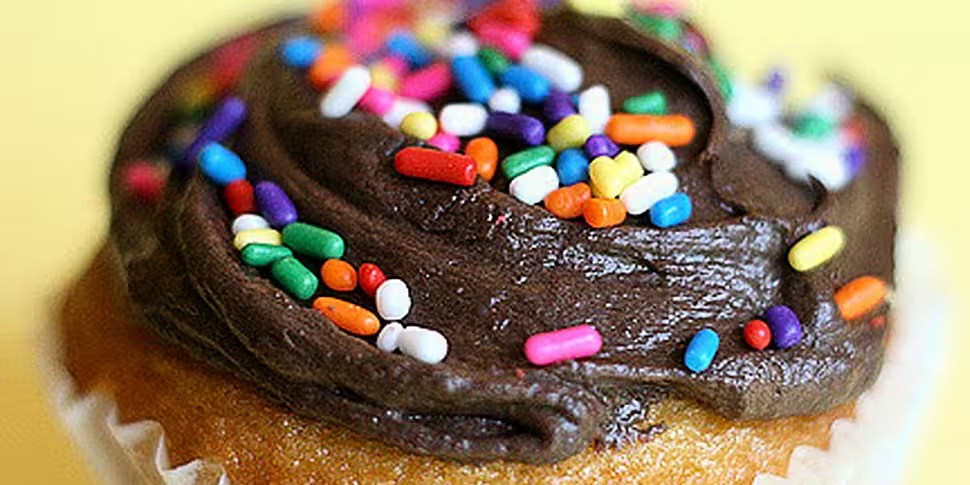The amazing thing about hundreds-and-thousands, or sprinkles to our cousins across the Atlantic, is that despite their crunchy ubiquity adding a dash of rainbow dazzle to (insert your own jokes here) fairy cakes and ice cream coiled atop a cone, they actually represent the first step in a very complicated process. A singular hundred-and-thousand is a type of dragée, the French name usually used for almonds covered in layers of hard sugar that get passed around at weddings and rarely eaten. For their modern production, imagine a kind of kitchen concrete mixer that tosses them through a “charge” of sugar solution, with the ever rotating pan coating all sides. A similar process, albeit over a sugar crystal rather than a nut, leads to the production of the sprinkle, which different edible dyes added and batches mixed together or segregated, depending on your particular sugar craft needs.
Dragées may have actually found their own origins in apothecaries’ workrooms, where a sweetened gum was layered over pills too bitter to swallow. Regardless, they are French, with the earliest found use of the word dragée dating back to Verdun in the 13th century. Manufacturing them by hand was an incredibly skilled process, involving years of apprenticeship with professional confectioners, and a deft hand to control a glass pan.
By the mid 19th century, industrialisation meant mechanised production of hundreds-and-thousands on the scale of millions at a time, and all kinds of names were used to describe them, including: green peas, coral beads, rifle balls, red and white currants, and pearls.
It all gets a little bit more confusing when it comes to the chocolate sprinkle; despite the austere approach to fun normally displayed by the Dutch in the 19th and early 20th century, in the contemporary Netherlands, sandwiches might well be the weirdest thing on the menu. Rivalled only by Australians’ fondness for buttering slices of white pan and spreading them with rainbow sprinkles to produce ‘fairy bread’, the Dutch have no fewer than three sweet sandwiches to choose from. The vlokken are literal flakes of dark, milk and white chocolate on a buttered bap, while muisjes or ‘little mice’ (although they look more like the droppings left behind by mice exposed to robust medical science) are aniseeds covered in bright pink or blue coatings served to new mothers on a biscuit, either to stimulate lactation or as a nod to their new offspring.
But those two pale in comparison with the earl of sprinkle-strewn sandwiches, the hagelslag. Taken from the Dutch for hailstorm, this breakfast dish, the kind no child should never hear tale of, comprises a slice of bread with a thick layer of butter. On top of which are (very) liberally sprinkled chocolate dragée, with the Dutch consuming more than 14m kilos of the hundreds-and-thousands per year – roughly 1m of the country’s 16m people admitting to pouring them straight out of the packet and into their mouths.
Even more bizarre is the urban myth that links chocolate sprinkles in the US to Jim Crow, the name given to the era up until 1965 where state and local laws enforced racial segregation across America; given that parts of the north-eastern United States (still to this day) refer to hundreds-and-thousands as ‘Jimmies’, with many assuming over the decades this was a racist throwback to the aforementioned Jim, himself a fictionalised embodiment of everything racists thought worst about African Americans. According to David Wilton, author of Word Myths, there is no literature backing this up. While a lack of supporting etymological evidence can’t rule it out either, there is plenty linking the name ‘Jimmies’ to a Boston-based ice cream seller who offered sprinkles on his cones to any customers who donated to the city’s well-known Jimmy Fund, which raises money for paediatric cancer patients.
It’s far nicer to think of hundreds-and-thousands raising millions than discriminating against them.









